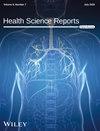Combined Forces Against Bacteria: Phages and Antibiotics
Abstract
Background and Aim
It is now known that bacteria are highly interactive and exhibit a range of complex cooperative behaviors, including conjugal plasmid transfer, toxins, swarming, drug resistance, toxin production, biofilm development, and other virulence traits. The development of phage–antibiotic synergy (PAS) could be a useful weapon against bacterial infections where antibiotics increase phage replication and antimicrobial activity. This study investigates the therapeutic potential of PAS in combating bacterial infections, focusing on the mechanisms and clinical implications.
Methods
A comprehensive review of recent literature was conducted analyzing studies on PAS, including their effects on biofilm degradation, multidrug-resistant (MDR) bacteria, and toxin-producing pathogens. Key factors such as timing, dosing and compatibility of phage-antibiotic combinations were examined.
Results
PAS showed promising results in various bacterial infections. The combination of phages and antibiotics restored the susceptibility of MDR strains, facilitated the degradation of biofilms and minimized the need for high doses of antibiotics, thereby reducing potential side effects. However, challenges such as the emergence of resistance and antagonistic interactions with certain combinations remain. Key factors influencing the efficacy of PAS include phage and antibiotic dosing, timing of administration, and the physiological state of the bacteria.
Conclusion
PAS has potential applications in the treatment of complex infections. Despite the promising results, further research is essential to standardize protocols, optimize therapeutic combinations and address safety concerns. Clinical trials focusing on phage selection, resistance management and patient-specific treatments will be crucial for the translation of PAS into clinical practice.


 求助内容:
求助内容: 应助结果提醒方式:
应助结果提醒方式:


